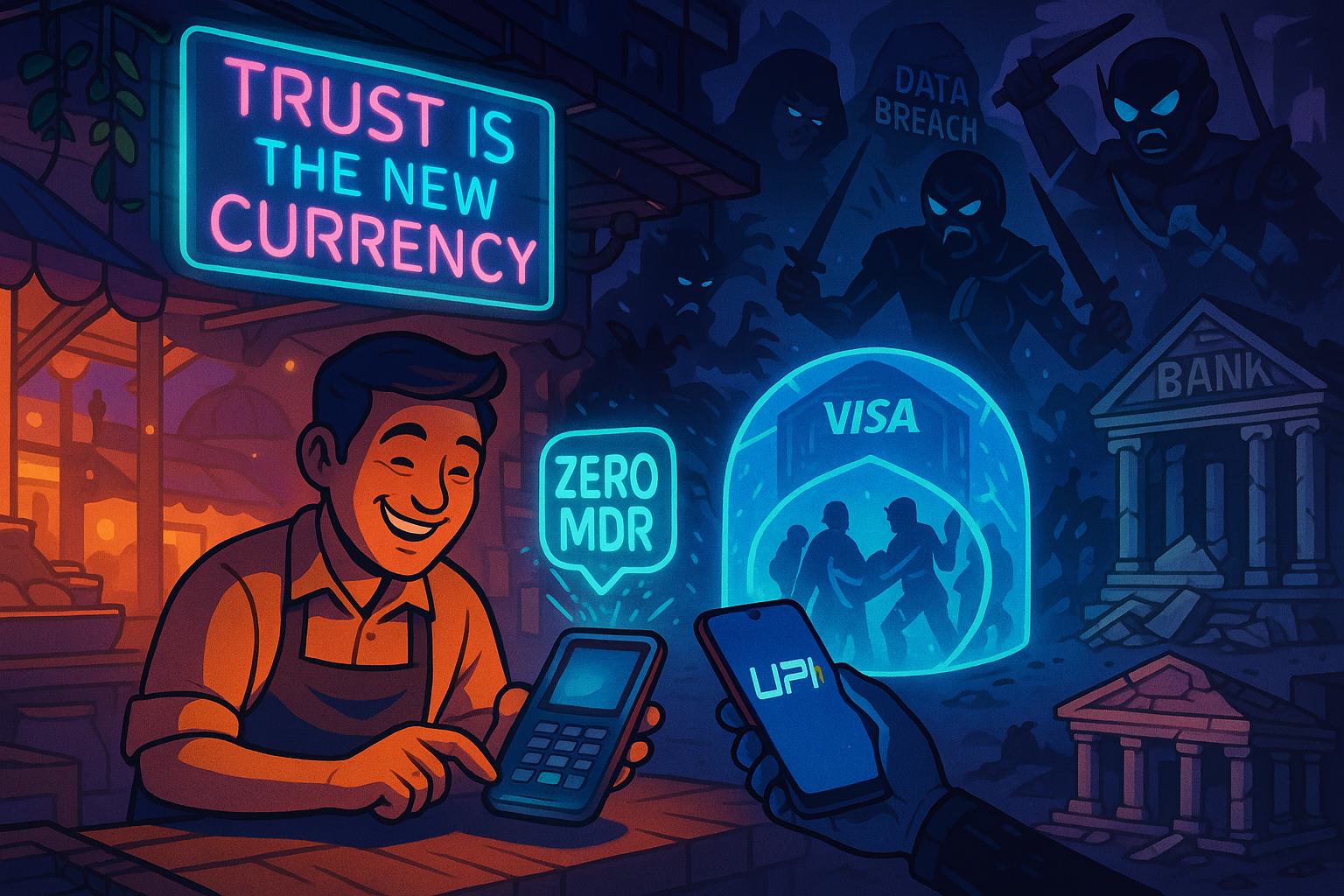
Sunday Fun: Zero MDR Goes Global: A Merchant’s Dream… or a Payments Nightmare?
Apologies in advance for the slightly long read—but when free lunches, government subsidies, and Visa’s profit margins are involved, brevity is a luxury we can’t afford.
Once upon a time, accepting digital payments meant merchants paid a modest “convenience tax” (the Merchant Discount Rate, or MDR) to keep the wheels of finance turning—banks, card networks, and that one fintech still burning VC money all got their cut.
Then came Zero MDR, where merchants pay nothing. Sounds like economic wizardry? In India, it’s policy. And now, the world is watching—some with envy, others with abject horror.
What Is Zero MDR?
In short: merchants pay zilch for accepting certain digital payments. Fantastic for the corner store. Less fantastic for the companies footing the bill.
India pioneered this in 2020 by axing MDR for UPI and RuPay debit cards to boost cashless payments. The government covers part of the cost—but the industry’s still debating whether this is genius or a fiscal time bomb.
Can This Work Outside India?
Spoiler: Unlikely at scale. Here’s the global reality check:
- USA: Capped debit MDR (thank you, Durbin Amendment)
- EU: Hard fee ceilings (0.2% for debit, 0.3% for credit)
- Australia/Canada: Surcharging allowed, but with transparency rules
- Singapore: Pure market competition—may the lowest MDR win
- Indonesia: QR payments capped at 0.3%-0.7% (still not zero)
Zero MDR remains India’s bold (some say reckless) experiment. Elsewhere, the consensus is: someone always pays.
Visa & Mastercard’s Survival Playbook: From Fees to Fortresses
With their MDR revenue under siege, the card giants aren’t sulking—they’re rebranding. The new pitch? “You’re not paying to accept cards anymore. You’re paying to avoid becoming tomorrow’s cybercrime headline.”
- The Upsell: Security as a Service
Old World: “Pay 2% to process transactions.”
New World: “Pay 0.5% for payments, 1.5% so Russian hackers don’t auction your customer data on the dark web.”
Visa’s “Advanced Authorization” and Mastercard’s “Cyber Front” now scan transactions in real-time using AI—with Mastercard claiming their system makes 1.6 million security checks per minute. That’s either impressive or terrifying, depending on how paranoid you are.
- AI Agents: The New Middleman
Mastercard’s Brighterion AI helps merchants predict fraud patterns, while Visa’s Deep Auth uses machine learning to score transaction risk. The MDR receipt now reads “0.3% for payment processing, 0.7% for your AI bodyguard.” - Loyalty Programs 2.0 (Now with Cyber Insurance)
Visa’s added SMB Protection to its small business cards, while Mastercard partners with Allianz for data breach insurance. The new value prop: “Spend more, and we’ll encrypt your data harder.” - The Threat Narrative
Mastercard’s latest reports highlight that 60% of SMBs go under within six months of a cyberattack. Visa’s CISO keeps reminding everyone that payment fraud attempts rose 80% last year. Subtle? No. Effective? Probably.
Winners vs. Casualties
- Merchants: Lower costs but new security headaches
- Consumers: More options, but their data’s now the battleground
- Banks: Caught between regulation and innovation
- Card Networks: Learning that “security tax” sells better than “processing fee”
The Future: A Hybrid Reality?
The payments industry’s new math looks something like:
Basic Tier (for mom-and-pop shops):
- Zero MDR on transactions
- Pay-as-you-go security features
Premium Tier (for everyone else):
- Small MDR for processing
- Mandatory AI protection suite
- Bundled cyber insurance
The bottom line? Zero MDR was supposed to kill the payment giants. Instead, it forced them to get creative—and merchants might just pay more for protection than they ever did for processing.
After all, as Mastercard’s CEO recently put it: “In the digital age, trust is the most valuable currency.” And apparently, it’s one they’ve learned to monetize quite nicely.
